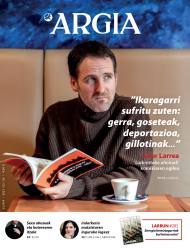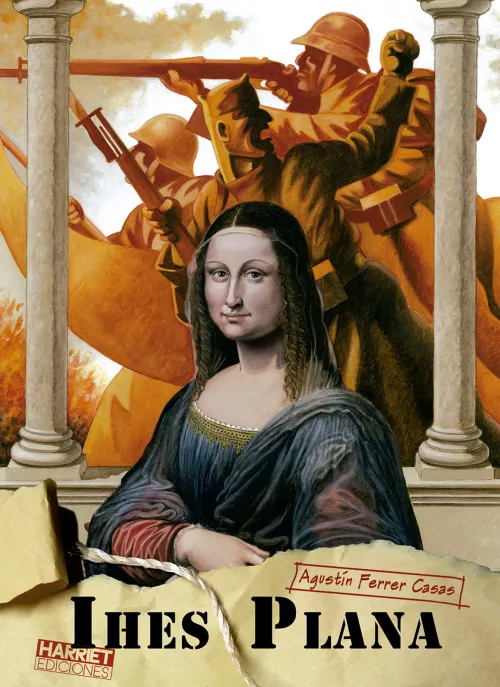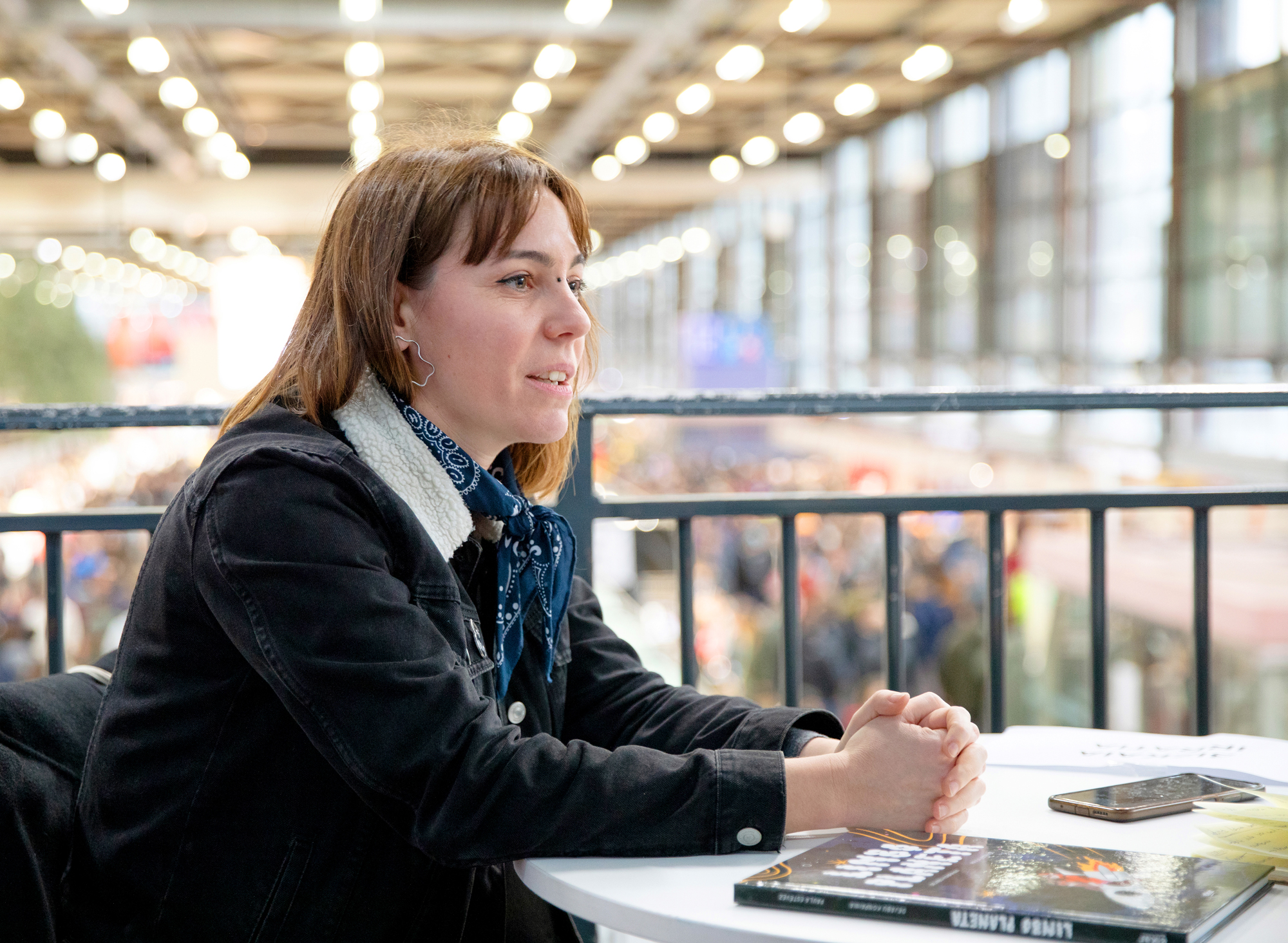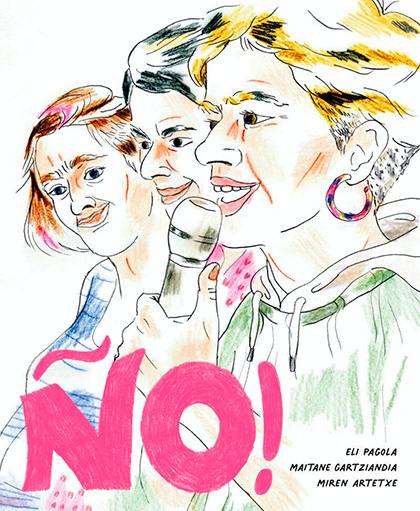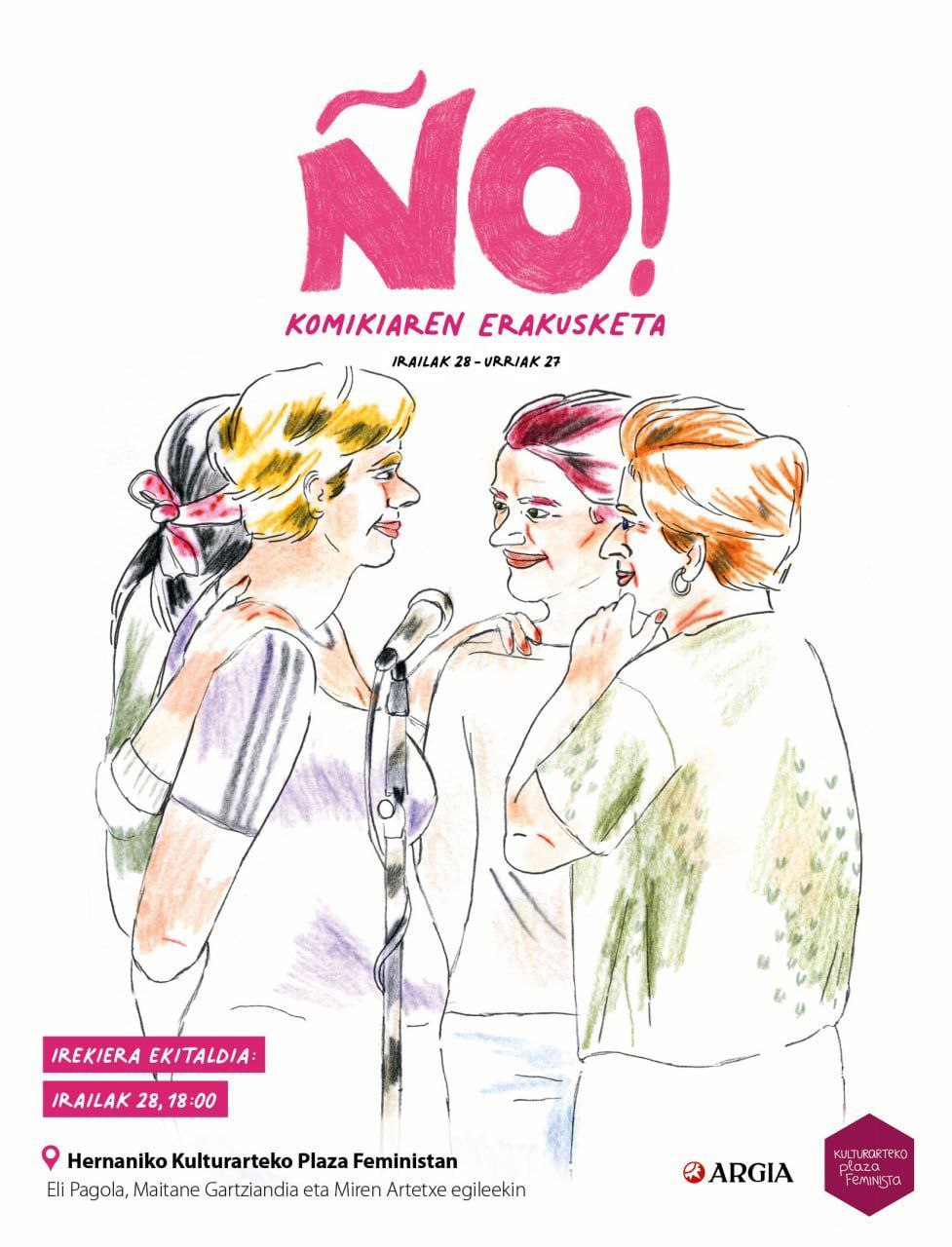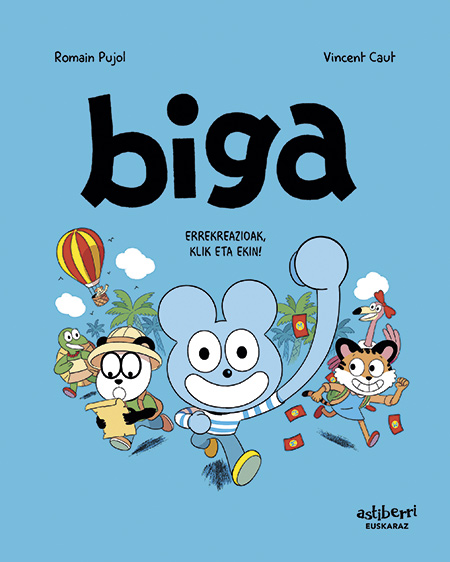“Comic book allows us to count things more freely”
- The comic book Adur Larrea has quoted us in the house Altzuieta, in the land of the sea (Bilbao, 1982). The protagonists of history gathered here: the losers of the Convention War, the deserters and, in general, the victims, who joined the group at the end of the 18th century to steal and terror from neighbouring peoples. Since then the house is here. It is not the only one that has lasted more than 200 years: looking for a place for the interview, Larrea has pointed to us many other places that appear in the comic book, in Itsasun and in Kanbo. We started the conversation by talking about the relationship between places and history.

Do you see the following areas differently after your study to create the Cape Basas?
Yes. Actually, although it's been written about this, it was in the 1960s that it was last done by a researcher named Robert Poupel. Since then I have not known anything, I think those who are here have been forgotten. By researching comics, you realize the importance of places and that some things have come to this day. Although it happened 227 years ago, the places are there, at least many. Now that we go somewhere we know where we are.
He started from some ancient verses. What did they have to immerse themselves in a project of so many years?
From the written verses of Xabier Kaltzakorta to the oral. I knew these verses because they appeared in Urkabe-bertsoak Euskaraz: a student gaztea and others (Ahozko azterketa; Mendebde Kultura Alkartea, 2003). “Cordel’s literature,” which lists the stories of those sentenced to death, there is approximately one gender. And I'm interested, because there are the last wills, the last words, the statements... of those who are usually about to die. These verses, although somewhat similar, have a more humorous point; a black, macabre humor. That is, it may not be they who write, in prison or in losses, but someone else.
On the other hand, since the work of Kaltzakorta did not show a specific historical location, I was curious. There's talk of a place called Lurbintto, it's a toponym -- is there anything behind it? Is it true or is it a formula for designating an imaginary place? I started looking, and I've seen that in Kanbo there are two or three -- Lurmintoa, Lurminttu, and others who have been changed from the deformed French language graph. So on the one hand, with the search for that toponym and, on the other hand, with parallel readings about the time, I realized that in this area there was a band of ohoin or revenge that had been doing massacres.
He also named them as ohoin, but there was more to it, right? Expropriated, marginalized ... They're complex characters in the middle of a tough time.
Yes, I have given them “beds” because in the verses it also appeared like this. And name it because it's so complicated -- what are your feet? Heroes? Criminals? I have retained the title in honor of the verse, but as you enter the comic book, you see that “feet” may not be the most appropriate word. But I haven't found who can be better instead. Besides the theft, there are acts of revenge, of political action... they were not limited to dealing for profit. If it was an appetite for vengeance, and I believe that several factors are gathered together: in that band there were people of different profiles – peasants, theorists, walking soldiers, deserters…– at some time they came to have more than 60 people, and the Altzuieta house for evicted and widowed people, their children and families who did not know where to go.
"What they suffered in four or five years is terrible: war, postwar, famine, deportation, guillotines, emigration..."
Then you have to bear in mind that many of them came from war with weapons. And they knew how to use them. Others came from Landeta, deported, angry and eager for revenge. All this is articulated in the same roof. They were also an organized group. The comic does not show up, but they did have these kinds of red shirts, red bands or red belts as identification elements.
You don't make moral judgments of characters, you're far from making too clear distinctions between honest and bad comics.
I'm not to judge who. What's happening here, it's happened: deportations, guillotines, persecutions -- places are also there. We also have the characters documented. Some of us know little, which is mentioned in the verses; most things are in official documents, in judicial papers, etc. Of course, the look out there is another one. So you have to do a profile job with the characters, look for the story behind them.
I ask you this, because I think it is easy for the story of this group to break with the current eyes. I do not think I have.
Suffering because everyone has suffered. The story is more to present a sequence of events than to judge or idealize. Then yes, you can feel more or less affinity with some characters, and then you start thinking, "This did this -- clean a person, for example -- and yet I feel empathy with him."
.jpg)
The comic also shows the extent of violence and the climate of harassment of those years.
What they suffered in four or five years is terrible: war, postwar, famine, deportation, guillotines, emigration -- and constant misery. On the one hand there is structural violence, but on the other there is also the violence they used. They weren't engaged in shattering, perhaps using violence tailored to what they perceived. From the threats, insults... then, here the Cencerras were made: they went to a house and the dirty rags were removed... but then the physical aggressions begin, the shootings to the houses, they give fire to the prairies of others, they cut the vineyards, the robberies... Many times there was not much to steal. You see what they stole and they were all pretty miserable.
It is striking how you reflected the time: you can almost hear the sounds of the streets of Itsasu.
Half my family belongs to this region, which has made it very easy for me to go to the places and meet them. But it has also been an exercise. Lighting, for example: in those years there was only sun and candles, and I played with those contrasts. I think it also goes well to the comic book to give a point of drama like this. Then, today, there are programs on the Internet to know what the fourth crescent was, the waning moon or what it was at a given date. And here [notes page 7 of the comic book] I introduced this date, on February 19, 1794, when the protagonists defecate. When will they desert so they don't have to wear lamps? For there was a night full of moon. They are pitokerías, but I said: how did they cross the forest in the midst of a war? The documentation is also done graphically in these cases, but it is not known if at that time the streets of Itsasu would be of stone or would be a sea bass, I do not know if in all the roofs they would have tiles or straw… But seeing that many houses have come to this day, I have copied some sites with quite fidelity. These houses [which appear on pages 64 and 65 of the comic book, accounting for the relationship of activities of the Lurbintto group] still exist and I have drawn how I thought they could be at that time.
"In those years there was only sun and candles, and I played with those contrasts. I think it also goes well to the comic book to give it a point of drama."
Most of the band are men.
Yes, but there were also women in Altzuieta, among those arrested in the raid that dissolved the group. At first I thought they were from the group. But I don't think, because most of them were minors: a sixteen-year-old girl, one thirteen, one nine-year-old -- instead, what I mention in the comic book, Joana Xurrute, could have another implication. I don't mean the police were right, but she kept her in detention for two months, and seeing her husband was guillotined, maybe some motivation to work as a team. It is true that the comic book is very male, but I wanted to tell the story of that band and in that band they are all men, except Juana.
At the end of the comic book, there is also the issue of the oral transmission of history. I assume that the facts are not seen in the same way in verses on the feet of Cape and, for example, in the proceedings against them.
No, for example in the verses it is said that they were hanged, but we do not know if by saying “hanging” it refers to the mountain of the waters as a whole. If we take it literally, they were not hanged, but guillotined. Pocuba recorded a lot in the archives, but since Euskera did not know, some things are badly transcribed. Even those who made the minutes of the trial mistranscribed names, aliases, places -- so sometimes I've gone behind and I've been able to understand things differently.

It has reflected with two black pages the silence that occurred after condemning the members of the band. Why didn't we know this story? Perhaps I could have claimed the history of this group because nobody came from behind?
Yes, it's somehow a family matter. They are small towns and they were guillotined, not only these: some dozens of people died in this region for two or three years. I think it's a lot. And the same kind of deportation. That can be claimed: forgetting the deportees. But there's the same habit of cleaning up rags from home to home: "Go on, we're not going to talk about that anymore." I don't know, maybe then there'd be family chocks or grudges, but there's no trace of them in the records. The Lurbintto itself has also disappeared as a toponym.
In recent years we have seen more and more historical fiction made through comics. What possibilities does the format offer?
I think Irati Majuelo wrote in Berria that comics has lived as a semi-subsidiary genre of literature. And it's true. Maybe that gives us a freedom, not to do everything we want, but to have things freer in our parameters. Asisko Urmeneta, Mikel Begoña or myself took that historic part and then we fictioned a lot. Maybe the comic book is more flexible for it. But at the same time, having a picture, it's credible. We see it, and what our eyes see “well,” let’s say. For example, films depend on large working groups, it's a great job. Also comic book, but you can do it yourself.
Ihes plana
Agustín Ferrer Casas
Itzulpena: Miel A. Elustondo
Harriet, 2024
---------------------------------------------------------
1936ko azaroaren 16an Kondor legioko hegazkinek Madrilgo zenbait museori egin zieten eraso. Eta horixe bera da liburu honetara... [+]
SCk Zerocalcareri egindako galdera sorta eta honen erantzunak, jarraian.
Bildumako azken alea izango dela jakinarazi dute: lehenbizikoa Ni-ari buruzkoa izan zen, eta bigarrena Zu. Bigarren hura bezala, autoedizioan kaleratu du honakoa ere.
Ño!
Texts: Illustrations Eli Pagola and Miren
Artetxe: Luz Maitane
Gartziandia, 2023
------------------------------------------------------
Before and after the comic, both on the skin and back provided, as well as inside tapas and tapas, there are images and words... [+]
Biga (5 books)
Screenplay: Illustrations Romain
Pujol: Vincent Seguros
Astiberri
----------------------------------------------------
We've read eleven stories at home to our seven- and nine-year-olds, and I would say that I've never seen them so hooked that with the... [+]
Screenplay
Anker: Gregorio muro harriet
Illustrations: Alex Male
Color: Garluk Aguirre
Harriet, 2023
The Anker comic is located in January 2019. In the Russian regions, near the borders of China and North Korea. It shows the mafias that are flourishing the Siberian... [+]









